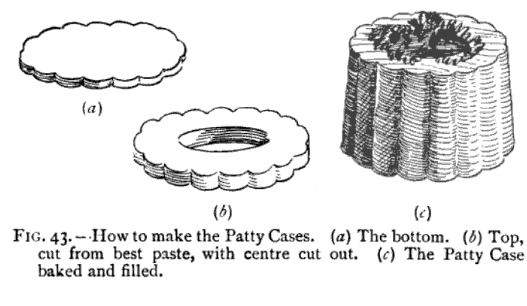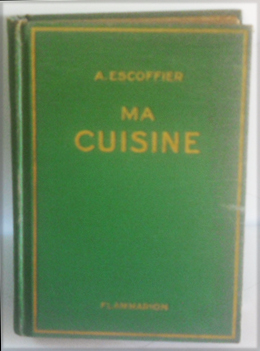|
Poularde à La D'Albuféra
''Poularde Albufera'' (Albufera Pullet) is a chicken dish attributed to French chef Adolphe Dugléré which was named in honour of the Duke of Albufera. It consists of poached chicken (poularde) with a garnish of vol-au-vents filled with quenelles, cocks' kidneys, mushrooms and truffles in Albufera sauce.Auguste Escoffier (1907), ''Le Guide culinaire'' See also * List of chicken dishes This is a list of chicken dishes. Chicken The chicken (''Gallus gallus domesticus'') is a domesticated subspecies of the red junglefowl (''Gallus gallus''), originally native to Southeast Asia. It was first domesticated around 8,000 year ... References French chicken dishes {{france-cuisine-stub ... [...More Info...] [...Related Items...] OR: [Wikipedia] [Google] [Baidu] |
Adolphe Dugléré
Adolphe Dugléré (; 3 June 1805 in Bordeaux – 4 April 1884 in Paris) was a French chef and a pupil of Marie-Antoine Carême. Les Frères Provençaux Dugléré was a ''chef de cuisine'' to the Rothschild family until 1848, and was manager at the restaurant ''Les Trois Frères Provençaux'' at the Palais-Royal from 1848 to 1866 which was owned by three men from Provence named Barthélémy, Maneille and Simonas (who were, in reality, not brothers). Café Anglais In 1866 he became the head chef of the Café Anglais (founded 1802), which became the most famous Paris restaurant of the 19th century and where he is believed to have created the dish ''Pommes Anna''. Dinner of the Three Emperors It was here in 1867 that Dugléré served a famous meal that became known as the '' Dîner des trois empereurs'', ('Dinner of the Three Emperors') for Tsar Alexander II of Russia, his son the tsarevitch (who later became Tsar Alexander III) and King William I of Prussia, as well ... [...More Info...] [...Related Items...] OR: [Wikipedia] [Google] [Baidu] |
Louis Gabriel Suchet
Louis-Gabriel Suchet, duc d' Albuféra (; 2 March 1770 – 3 January 1826), was a French Marshal of the Empire and one of the most successful commanders of the French Revolutionary and Napoleonic Wars. He is regarded as one of the greatest generals of the Napoleonic Wars. Early life Suchet was born on 2 March 1770 in Lyon, the son of Jean-Pierre Suchet and Anne-Marie Jacquier. His mother died four years later. His father was a silk merchant, and Suchet originally intended to follow a business career. He received a solid education and joined his father's business in 1787, working as an apprentice for two years. Upon Jean-Pierre's death in January 1789, Suchet and his brother Gabriel-Catherine took over the family enterprise, which they decided to expand under the name ''Maison Suchet frères''. However, the French Revolution led Suchet to volunteer, in 1791, for the cavalry of the National Guard at Lyon. He displayed abilities which secured rapid military promotions, and ... [...More Info...] [...Related Items...] OR: [Wikipedia] [Google] [Baidu] |
Poularde
Poularde is a culinary term for a chicken that is at least 120 days old at the time of slaughter and fattened with a rich diet that delays egg production. In the past it was common to spay the chickens early in life to ensure desirable meat quality, similar to the castration of a capon. Similar terms are often confused: in English, ''pullet'' refers to a young hen, generally under one year old. Sometimes it is more specific, indicating a hen that is fully grown but has not reached 'point-of-lay', i.e. has not yet started laying eggs, which often happens between 16 and 24 weeks of age, depending on breed. ''Poulard'' (no 'e') can be used to mean "roaster", i.e. a young chicken weighing up to and living 10–12 weeks, as opposed to smaller "broiler" chickens weighing less than . In French, ''poussin'' is a newly hatched chick (either sex), ''poulet'' is a young chick (either sex), ''poulette'' is a young female chicken (one form of a poulet, and corresponding to the male coquele ... [...More Info...] [...Related Items...] OR: [Wikipedia] [Google] [Baidu] |
Vol-au-vent
A ''vol-au-vent'' (pronounced , French for "windblown", to describe its lightness) is a small hollow case of puff pastry. It was formerly also called a patty case. . A ''vol-au-vent'' is typically made by cutting two circles in rolled out puff pastry, cutting a hole in one of them, then stacking the ring-shaped piece on top of the disc-shaped piece. The pastry is cooked, then filled with any of a variety of savory or sweet fillings. The pastry is sometimes credited to Marie-Antoine Carême. However, an entremet called ''petits gâteaux vole au vent'' is mentioned in François Marin's 1739 cookbook ''Les Dons de Comus'', years before Carême's birth. In France, it is usually served as an appetizer or a small snack, filled with chicken or fish. International similarities In Belgium, it is a common main dish that can be found on the menus of most restaurants, and is nearly always filled with a combination of chicken, mushrooms, and small meatballs, served with either mas ... [...More Info...] [...Related Items...] OR: [Wikipedia] [Google] [Baidu] |
Quenelle
__NOTOC__ A quenelle () is a mixture of creamed fish or meat, sometimes combined with breadcrumbs, with a light egg binding, formed into an egg-like shape, and then cooked. The usual preparation is by poaching. Formerly, quenelles were often used as a garnish in haute cuisine. Today, they are more commonly served sauced as a dish in their own right. Similar items are found in many cuisines. By extension, a quenelle may also be another food made into a similar shape, such as ice cream, sorbet, butter, or mashed potato quenelles. Etymology The word quenelle is attested from 1750. The commonly accepted etymology is that it derives from the German ''Knödel'' (noodle or dumpling).; ''Petit Robert'', 1972; Oxford English Dictionary, Draft Revision, Dec. 2007; the old '' Larousse Gastronomique'', however, reports that some writers trace it to an Old English word ''knyll'', while Dietrich Behrens in'' Über deutsches Sprachgut im Französischen'', ''Giessener Beiträge zur ro ... [...More Info...] [...Related Items...] OR: [Wikipedia] [Google] [Baidu] |
Albufera Sauce
Albufera sauce (French: ''sauce Albuféra'') is a daughter sauce of French cuisine. It is based on a suprême sauce, which itself derives from the mother sauce velouté. Escoffier shares a recipe in ''Le Guide culinaire'' which consists of a base of suprême sauce to which is added meat glaze in order to lend the latter an ivory-white tint which characterizes it. It is served chiefly with poultry and sweetbreads.Auguste Escoffier (1907), ''Le Guide culinaire'' Louis Gabriel Suchet (1770–1826), one of Napoleon's generals and Marshal of France for a time, was named duc d'Albufera after a lake near Valencia, Spain, to mark his victory there during the Peninsular War. Marie-Antoine Carême Marie-Antoine Carême (; 8 June 1783 or 178412 January 1833), known as Antonin Carême, was a leading French chef of the early 19th century. Carême was born in Paris to a poor family and, when still a child, worked in a cheap restaurant. La ... created several dishes in the duke's hono ... [...More Info...] [...Related Items...] OR: [Wikipedia] [Google] [Baidu] |
Auguste Escoffier
Georges Auguste Escoffier (; 28 October 1846 – 12 February 1935) was a French chef, restaurateur, and culinary writer who popularised and updated traditional French cooking methods. Much of Escoffier's technique was based on that of Marie-Antoine Carême, one of the codifiers of French ''haute cuisine''; Escoffier's achievement was to simplify and modernise Carême's elaborate and ornate style. In particular, he codified the recipes for the five mother sauces. Referred to by the French press as ''roi des cuisiniers et cuisinier des rois'' ("king of chefs and chef of kings"—also previously said of Carême), Escoffier was a preeminent figure in London and Paris during the 1890s and the early part of the 20th century. Alongside the recipes, Escoffier elevated the profession. In a time when kitchens were loud, riotous places where drinking on the job was commonplace, Escoffier demanded cleanliness, discipline, and silence from his staff. In bringing order to the kitchen, he t ... [...More Info...] [...Related Items...] OR: [Wikipedia] [Google] [Baidu] |
Le Guide Culinaire
''Le Guide Culinaire'' () is Georges Auguste Escoffier's 1903 French restaurant cuisine cookbook, his first. It is regarded as a classic and still in print. Escoffier developed the recipes while working at the Savoy, Ritz and Carlton hotels from the late 1880s to the time of publication. The hotels and restaurants Escoffier worked in were on the cutting edge of modernity, doing away with many overwrought elements of the Victorian era while serving the elite of society. History The first edition was printed in 1903 in French, the second edition was published in 1907, the third in 1912, and the current fourth edition in 1921. Many of the recipes Escoffier developed while working at the Savoy in London, and later the Ritz in Paris. He kept notes on note cards. Recipes were often created and named for famous patrons including royalty, nouveaux riches, and artists. After leaving the Savoy in 1898, he began work on the book. Usage and style The original text was printed for the use ... [...More Info...] [...Related Items...] OR: [Wikipedia] [Google] [Baidu] |
List Of Chicken Dishes
This is a list of chicken dishes. Chicken The chicken (''Gallus gallus domesticus'') is a domesticated subspecies of the red junglefowl (''Gallus gallus''), originally native to Southeast Asia. It was first domesticated around 8,000 years ago and is now one of the most common and w ... is the most common type of poultry/meat in the world, and was one of the first domesticated animals. Chicken is a major worldwide source of meat and egg (food), eggs for human consumption. It is prepared as food in a wide variety of ways, varying by region and culture. The prevalence of chickens is due to almost the entire chicken being edible, and the ease of raising them. The chicken domesticated for its meat are broilers and for its eggs are Poultry farming#Egg-laying chickens, layers. Chicken as a meat has been depicted in Babylonian carvings from around 600 BC. Chicken was one of the most common meats available in the Medieval cuisine, Middle Ages. It was eaten over most of the Eastern ... [...More Info...] [...Related Items...] OR: [Wikipedia] [Google] [Baidu] |




